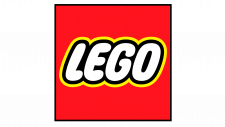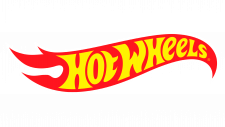Castrol Logo
Castrol, a British oil company, specializes in marketing industrial and automotive lubricants. They offer a wide range of oils, greases, and similar products for various lubrication applications. Castrol has a significant presence in motorsports, sponsoring numerous teams in Formula One, World Rally Championship, NASCAR, and more. They are known for their dynamic marketing strategies, including the Castrol Cricket Index in cricket and partnerships with the Australian national rugby union team. Castrol products are recognized by their distinctive red, white, and green color scheme, and their slogan, “It’s more than just oil. It’s liquid engineering,” underscores their commitment to quality and innovation.
Meaning and history
Castrol’s story, a saga of evolution and strategic transformations, began in the late 19th century. Established by Charles Wakefield in 1899, the company initially named Wakefield Oil Company, ventured into the realm of lubricants for industrial machinery. However, the early 20th century witnessed a strategic pivot towards automotive lubricants, birthing the Castrol brand, a name inspired by the innovative addition of castor oil to their products.
The 1960s ushered in a significant shift with Burmah Oil’s acquisition of Castrol in 1966. This merger not only broadened Castrol’s horizons globally but also infused new resources into its operations. Castrol, under this new leadership, pushed the envelope in product development, catering to a diverse range of sectors including automotive, aviation, and maritime industries.
The following decades, particularly the 80s and 90s, were characterized by Castrol’s dynamic expansion and diversification. The company fortified its manufacturing processes, ventured into uncharted markets, and cemented its status as a lubricant industry titan. Its involvement in motorsports further propelled its brand, synonymous with high performance and innovation.
Entering the new millennium, Castrol’s journey took another significant turn as it became part of the BP family in 2000. This acquisition by BP, a giant in the oil and gas sector, was a strategic move to bolster its lubricants division. Post-acquisition, Castrol, under BP’s stewardship, has continued its legacy of innovation and excellence.
While Castrol operates under the BP umbrella, it upholds its unique brand essence. The company is steadfast in its commitment to pioneering sustainable and technologically advanced solutions, adapting to the evolving demands of the market and environmental imperatives. Castrol, with over a century of rich history, stands as a testament to enduring quality, innovative spirit, and industry leadership in the world of lubricants.
What is Castrol?
Castrol is a pioneering brand in the lubricant industry, renowned for its innovative and high-quality products. With a legacy spanning over a century, it has established itself as a key player in developing advanced lubricants for automotive, industrial, and maritime applications, continuously adapting to the evolving demands of technology and sustainability.
1899 – 1917
The emblem features a dynamic contrast of colors and shapes, presenting a vintage aesthetic. The central figure is the word “CASTROL” in bold, capitalized letters, indicating strength and reliability. Surrounding the brand name is an arching banner that reads “WAKEFIELD,” suggesting a nod to the company’s origins. A smaller banner below states “MOTOR OIL,” clarifying the product’s purpose, while “BRITISH OWNED” is proudly displayed at the bottom, anchoring the brand’s heritage. The color palette of red, white, and yellow suggests energy and vibrancy, resonating with the product’s performance. The logo’s overall design exudes a classic vibe, reflecting the long-standing tradition and trust associated with the Castrol brand.
1917 – 1929
The logo showcases “Castrol” in sweeping red cursive, capturing attention against a deep green backdrop. Above, “Wakefield” is inscribed in modest white, maintaining balance without competing for focus. The addition of “Motor Oil” beneath, in the same white hue, conveys the product’s purpose with clarity. Compared to its predecessor, this rendition has shifted towards a more streamlined design, dropping additional banners and emblems for a cleaner, more modern look. The color scheme has been simplified to red and white lettering, enhancing readability and brand recall. The overall simplicity of this design reflects a modernizing shift, likely aiming to adapt to contemporary branding trends of its time.
1929 – 1946
This logo presents “Castrol” in bold, red script, centered and pronounced, evoking a sense of motion and efficiency. Above, “Wakefield” is written in smaller green letters, a subtle acknowledgment of the brand’s history. Notably, the word “PATENT” appears in a red rectangle, asserting the brand’s innovation and proprietary value. This version introduces the term “PATENT,” which wasn’t present in the previous design, perhaps signaling a unique formulation or technological advancement in their product line.
The overall design retains a familiar color scheme but with a more pronounced use of the color block for “PATENT,” drawing the eye and underscoring the brand’s exclusivity. The textual elements are more segregated, giving a structured and organized feel to the design. This iteration of the logo continues the theme of boldness and simplicity, with each element purposefully placed to convey Castrol’s commitment to quality and innovation in motor oil.
1946 – 1958
Encased within a circular boundary, the Castrol logo stands out with its red and white lettering against a green shield-like backdrop, split diagonally, evoking a sense of tradition and protection. The name “Castrol” is prominently displayed in a flowing, red script, suggesting fluidity and movement, with “Motor Oil” just below in a smaller size, affirming the product category. The addition of “REGD.” above and “(PATENTED)” below the main text implies a registered and legally protected innovation.
Comparatively, this design moves away from the previous rectangular format, opting instead for a round emblem that might suggest universality and completeness. The diagonal split of the background adds a dynamic element not present before, while the green color has been intensified, possibly to emphasize the brand’s identity. This emblem from 1946 exemplifies a refined and confident brand image, ready to be recognized and remembered across various mediums and distances.
1958 – 1968
This Castrol logo features a stark, minimalist design with the brand name in a bold, red font that captures immediate attention. The background is a crisp, green semicircle, creating a visual balance and implying growth and vitality. The removal of additional text and the adoption of a half-circle are significant changes from the previous iteration, which featured more text and a full circular boundary.
The latest design’s streamlined approach reflects a modernizing trend in branding, focusing on brand name recognition and memorability. The use of only two colors—red for the brand name and green for the background—creates a strong visual contrast that is both striking and instantly identifiable. This evolution of the logo suggests a company confident in its brand identity, relying on the power of simplicity to convey its message in an increasingly crowded marketplace.
1968 – 1992
The Castrol logo is characterized by its bold, red lettering set against a two-toned green oval, which is encased in a rectangular frame. This design retains the brand’s signature red and green color scheme, symbolizing energy and growth respectively. The use of geometric shapes—a rectangle encompassing an oval—provides a structured yet dynamic visual frame for the brand name.
Comparing this with the previous design, the most notable change is the introduction of the rectangle around the oval, giving the logo a more defined boundary and a stronger presence. The text “Castrol” remains central and prominent, but the stylization has shifted to a more contemporary font with sharper edges, suggesting modernity and precision. This evolution in design speaks to a brand that is both aware of its heritage and willing to adapt to the design sensibilities of a new era.
1992 – 2001
This logo depicts the Castrol name in a confident red font, centered within a white ellipse that intersects a solid green rectangle, conveying a modern and clean aesthetic. The design is a striking blend of shapes and colors, with the ellipse suggesting movement and the rectangle providing a strong foundational backdrop.
When compared to the previous design, this logo represents a notable simplification. Gone is the rectangular border, creating a less constrained and more fluid appearance. The green background now fills the entire space, offering a bolder canvas for the white ellipse and red text. This shift towards a more minimalistic style aligns with a broader trend in branding towards sleek, versatile logos that are easily recognizable and adaptable across various media. The Castrol logo remains unmistakable, with its iconic color scheme and typography, yet evolves to remain relevant and visually impactful in the ever-changing landscape of corporate branding.
2001 – 2006
The logo is a blend of motion and legacy, featuring the name “Castrol” in a vivid red font that signifies energy and passion. The typography is italicized, suggesting speed and efficiency, crucial qualities in the automotive lubricant industry. Adjacent to the wordmark is a green circle bisected by a dynamic red swoosh, tapering off into a spray of red dots. This graphic element symbolizes Castrol’s drive for innovation and its commitment to high-performance products.
The design harmonizes rounded and sharp forms; the circular emblem speaks to the completeness and global reach of the brand, while the angled text conveys forward-thinking. The color scheme is classic Castrol, with green symbolizing growth and vitality, and red representing strength and power. This logo encapsulates the essence of Castrol’s brand identity—bold, dynamic, and enduring.
This logo marks a departure from the previous design, introducing an aerodynamic feel with the elongated shape and the graphical element that resembles a swiftly moving object. The color scheme remains consistent, with red and green maintaining brand continuity. The stylized red swoosh, transforming into a spray of dots, conveys innovation and Castrol’s commitment to advanced technology in lubricants. This design iteration reflects the brand’s evolution and its focus on high performance and cutting-edge lubricant solutions.
2006 – 2023
The updated logo maintains the core elements of its predecessor but introduces subtle changes, reflecting a fine-tuning of the brand’s visual identity. The green hue appears slightly adjusted, potentially to align with evolving design trends or to improve visibility across various platforms and products. The size of the logo have been modified to optimize its impact and legibility, particularly in digital contexts where clear, scalable branding is crucial. These nuanced shifts underscore the brand’s attention to detail and its dedication to staying current and recognizable in a competitive market.
2023 – Today
The Castrol logo presents a striking image with its iconic red typography on a clean, white background, accompanied by a circular green emblem. The emblem features a dynamic red swoosh, conveying a sense of motion and fluidity. This design simplifies the previous iteration by removing the oval and streamlining the graphic elements, resulting in a crisp, modern appearance.
The transition from an oval to a circle suggests a more focused brand identity, with the emblem and the wordmark now given equal prominence. The removal of the dotted design within the swoosh indicates a shift towards sleekness and simplicity. The typeface of the “Castrol” wordmark maintains its boldness but with a refreshed sharpness, reinforcing the company’s forward-thinking stance. This logo evolution reflects Castrol’s adaptability and its enduring commitment to being at the forefront of the lubricant industry.





















